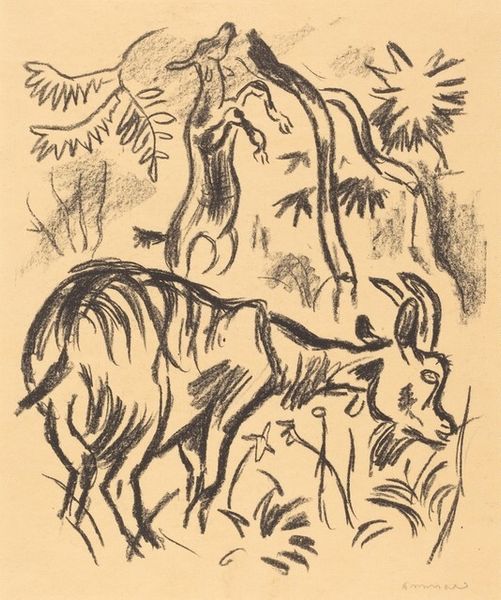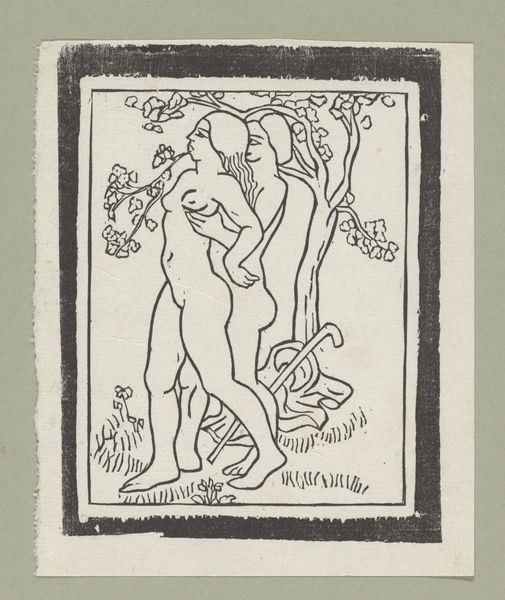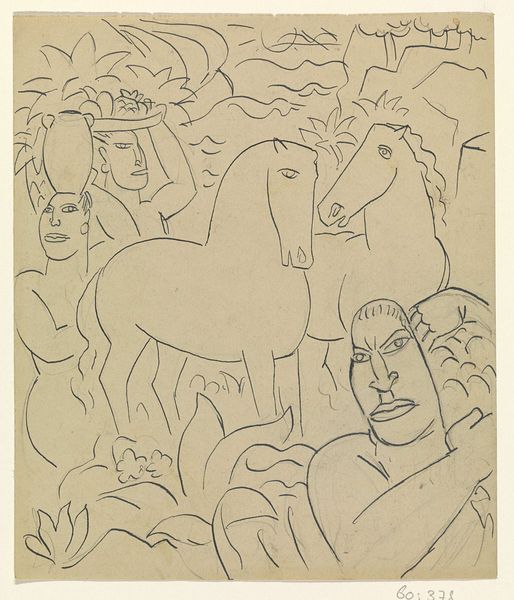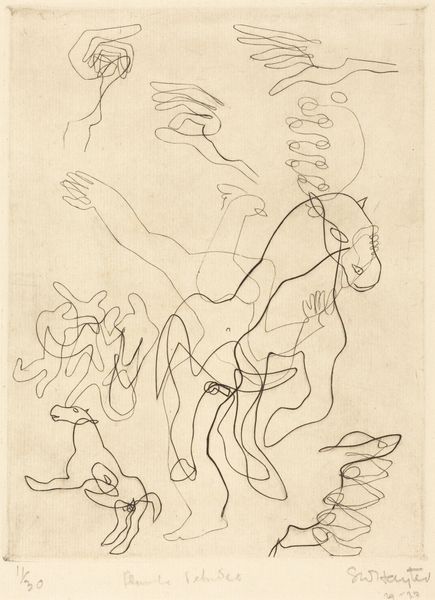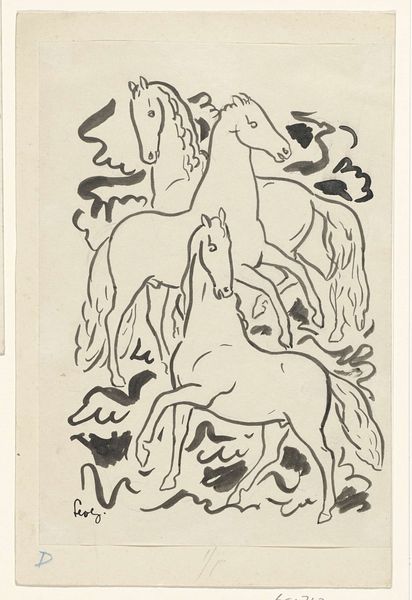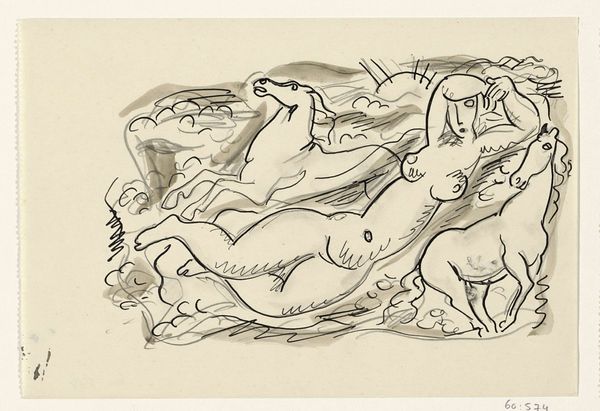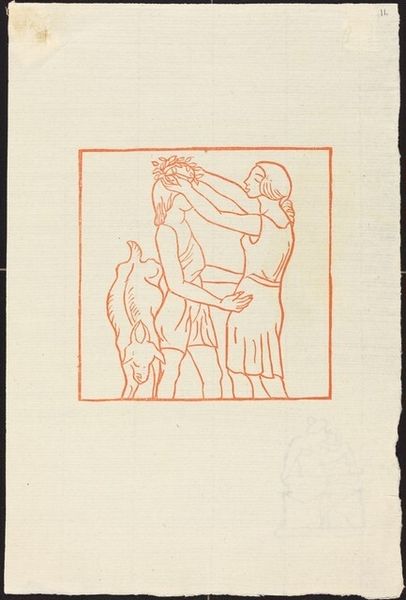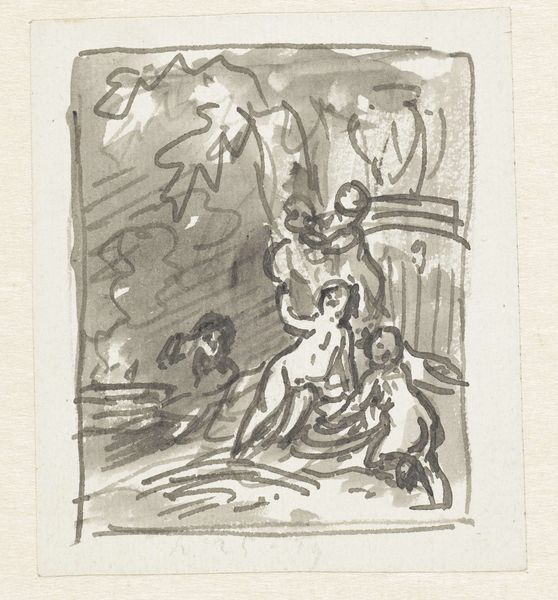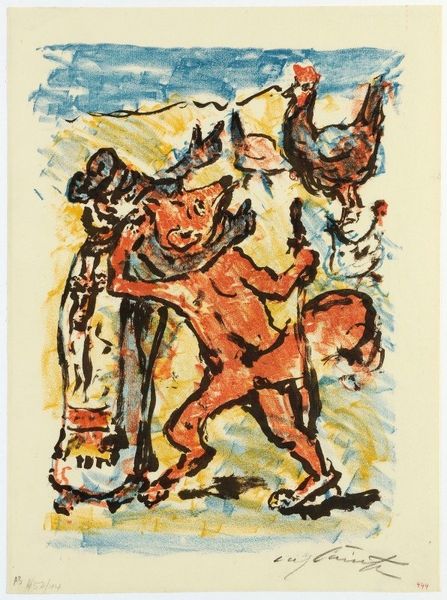
Dimensions: image: 14.4 x 11 cm (5 11/16 x 4 5/16 in.) sheet: 14.4 x 22 cm (5 11/16 x 8 11/16 in.)
Copyright: National Gallery of Art: CC0 1.0
Curator: Welcome. Here we have Marc Chagall's "Greeting Card," a 1980 print utilizing watercolor elements. It's a fine example of his post-impressionist style, combining figuration with a dreamlike landscape. Editor: My initial reaction is one of gentle whimsy. There's a naive quality to the lines, almost childlike, that speaks of joy and lightness. Curator: Absolutely. Chagall's work, particularly in his later years, often references themes of love, faith, and celebration. The 'Greeting Card' format here is interesting as it positions art as a medium to create intimate connections with the other, reflecting a broader cultural movement during the rise of expressive personalized goods. Editor: Looking at the composition, the floating figure of the woman, and the whimsical animal above her... it’s like a scene lifted directly from a dream. How do we interpret the symbolic load, particularly with its roots in early 20th-century immigrant experiences? Curator: Considering his background and the social context, there's a sense of nostalgia, a longing for the village life he left behind. Chagall uses archetypal figures—a lover, a domesticated animal—to represent universal emotions, softened by his experience of cultural dislocation, inviting compassion from the viewer. Editor: It is true. And even in its simple form, there's a definite conversation to be had about its gendered implications, this portrayal of womanhood that can be examined through feminist lenses. Do you feel there are moments of conflict here, or is it simply harmonious? Curator: It’s predominantly harmonious. Though the sharp lines create some dissonance, his deliberate aesthetic choice contributes to the work's unique emotive impact. It serves a particular audience which understands and cherishes cultural and social history—it is never fully divorced from it. Editor: So true; this work offers such open interpretations, that its real value could be that of the art acting as an affective bridge between distinct social groups. The accessibility of his visuals democratize its interpretation in a significant way, no? Curator: Yes, I completely agree. It's art for the people, offering comfort through shared cultural heritage, that could be seen in major or more mundane contexts of life. Editor: This glimpse has encouraged us to delve even deeper, thank you!
Comments
No comments
Be the first to comment and join the conversation on the ultimate creative platform.
